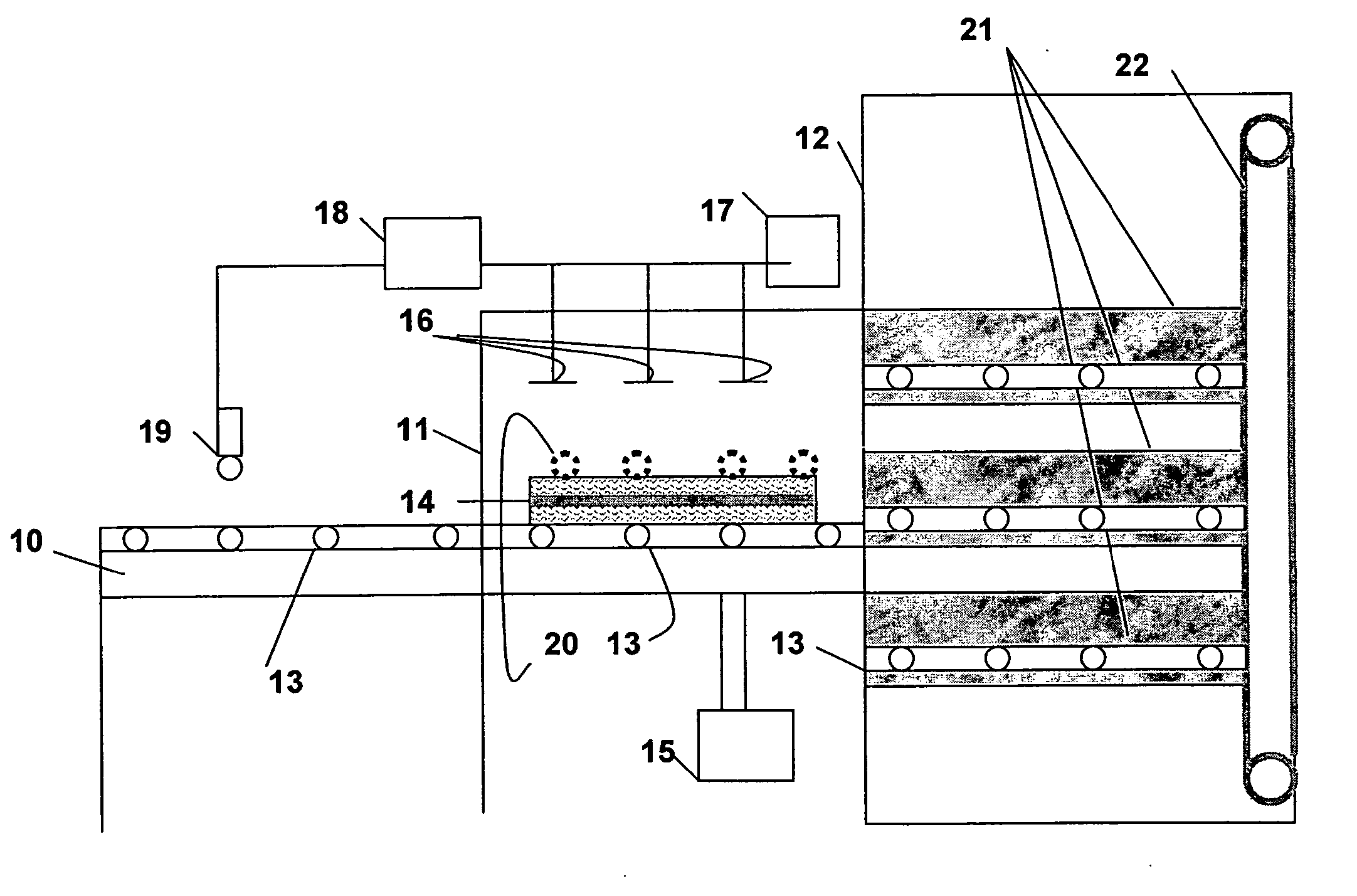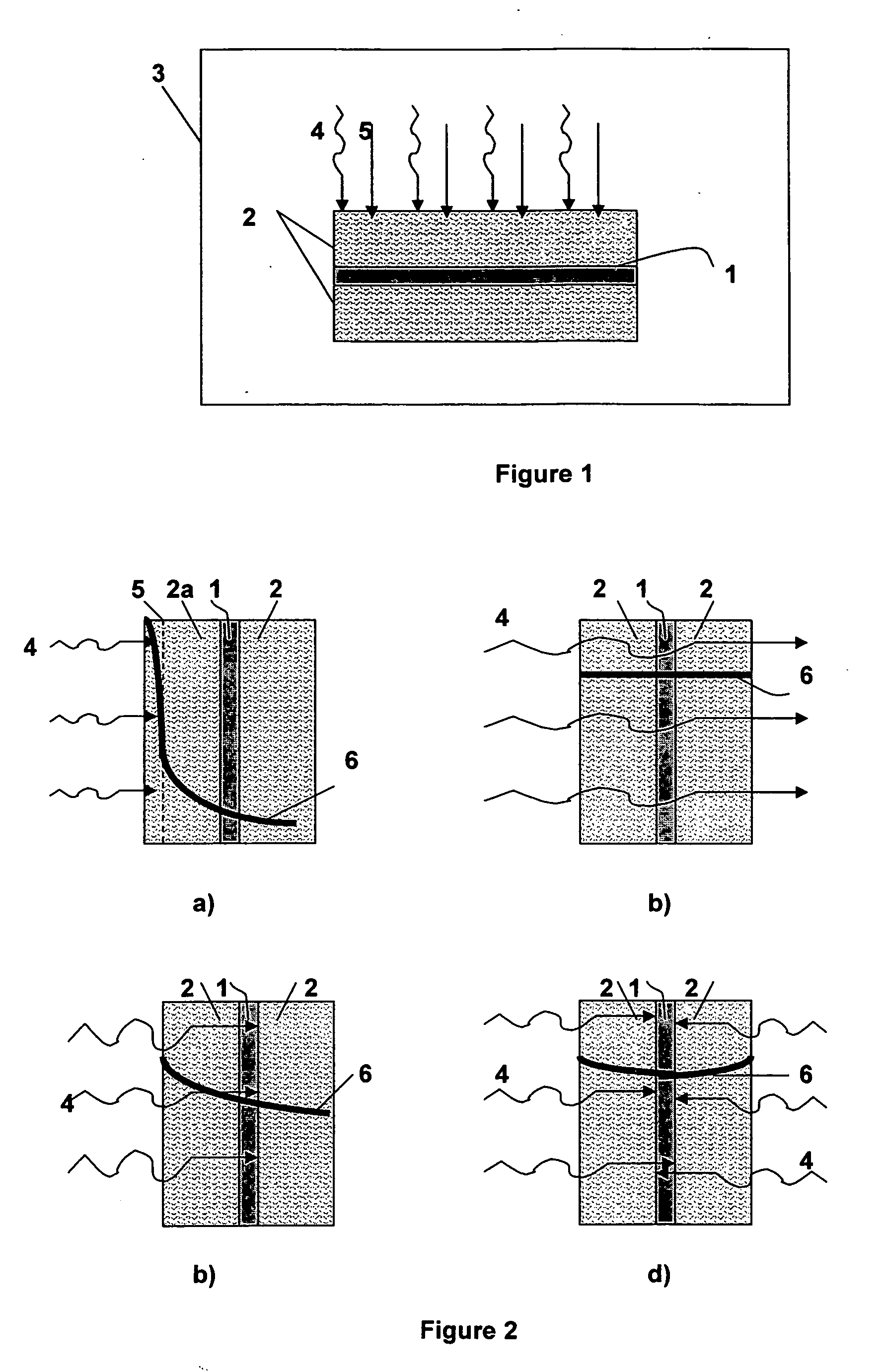Method and apparatus for laminating glass sheets
a technology of glass sheets and laminating equipment, applied in the field of methods, can solve the problems of air trapped between the film and the glass surface, the rest of the air must be removed, so as to achieve the effect of long heating and high pressur
- Summary
- Abstract
- Description
- Claims
- Application Information
AI Technical Summary
Benefits of technology
Problems solved by technology
Method used
Image
Examples
Embodiment Construction
[0028] The present invention relates to a method of laminating frangible materials, preferably glass articles, without using autoclave type furnaces, to effect rapid and exclusive short wave radiation heating of the laminating film, preferably plasticized polyvinyl butyral (PVB). In the invention at least one laminating film (1) (see FIG. 1) is placed between two glass articles (2) and the resulting sandwich is placed in a hermetic chamber (3) where it is subjected to vacuum, short wave radiation (4) and pressure (5) simultaneously. The vacuum level, the radiation frequency, pressure, and heating rate are important variables in the inventive method.
Short Wave Radiation Frequency
[0029] When short wave radiation meets with a sandwich, it penetrates inside it and heats the glass articles and film, losing energy:
[0030] I(x)=I(0)exp(−x / λ), where I(x) is the distribution of the radiation energy lost along the coordinate x—in the sandwich in the direction of radiation propagation; I(0) ...
PUM
| Property | Measurement | Unit |
|---|---|---|
| Fraction | aaaaa | aaaaa |
| Pressure | aaaaa | aaaaa |
| Pressure | aaaaa | aaaaa |
Abstract
Description
Claims
Application Information
 Login to View More
Login to View More - R&D
- Intellectual Property
- Life Sciences
- Materials
- Tech Scout
- Unparalleled Data Quality
- Higher Quality Content
- 60% Fewer Hallucinations
Browse by: Latest US Patents, China's latest patents, Technical Efficacy Thesaurus, Application Domain, Technology Topic, Popular Technical Reports.
© 2025 PatSnap. All rights reserved.Legal|Privacy policy|Modern Slavery Act Transparency Statement|Sitemap|About US| Contact US: help@patsnap.com



